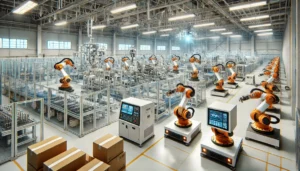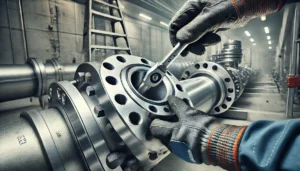In industries like construction, manufacture, or logistics, the proper handling of heavy loads is extremely important. The use of adequate equipment and efficient techniques ensures that the workers can perform their tasks safely and with minimal injury risk. For novices, knowing the proper tools can be very useful in improving productivity and preventing injuries from occurring.
Identifying the Risk Factors of Improper Handling
The first aspect of manual lifting is trying to evaluate the associated risks with a heavy load first. Musculoskeletal problems such as sprains, strains, and even chronic back pain are common when improper manual handling techniques are applied. One of the most important things to consider is how heavy, large, or stable a load is.
Mechanized lifting equipment should be utilized when it is impossible to manually handle a load. When it comes to attempting to lift heavier or awkwardly shaped items, a person should also consider the potential risk factors that can interfere with the attempt such as sharp edges and slippery surfaces.
Choosing the Most Appropriate Lifting Equipment
Choosing an appropriate device for lifting is key to the overall safety of handling goods. Learners ought to get used to some of the most frequently used items like the hand truck, pallet jack, forklift, hoist, and lifting clamp. Hand trucks and dollies are easy to use for carrying light items over short distances, while pallet jacks are capable of lifting and moving palletized goods. Forklifts are appropriate for large loads, but the operative must be trained and certified to operate them.
For vertical lifting tasks with very heavy objects, hoists and cranes are necessary, but they call for careful use and regular maintenance. When lifting clamps are used, they should always be capable of effortlessly gripping particular materials such as steel plates or pipes. These clamps must be inspected before usage and chosen correctly to fit the assignment.
Practicing Proper Lifting Procedures
In situations where heavy objects need to be lifted, it is highly important to follow correct lifting procedures. This involves careful planning. The first step to lifting a load requires ensuring that there are no obstacles on the path. When preparing to lift an object, it is best to stand close to it so that your feet are at a width that is roughly equal to that of your shoulders. To lessen the strain on the spine, bending the knees is preferable to chamfering the back.
One is more likely to stress their arms when standing further from their load, thus a better grip with both hands should lift the object with smoothness, minimizing distance away from the body. Finally, to conclude the task, the knees should be bent before lowering the load, ensuring heavy items are controlled while flinging them off in a safe direction. For good practice, beginners should repeat these actions to their full extent until the body’s muscles are used to it.
Securing Safe Material Management Policies
The implementation of company policies regarding the safe handling of materials is equally crucial to safety. The regular training of employees on the correct lifting procedures, hazards, and equipment use should be a priority. Regular checks on lifting equipment are also necessary to avoid equipment breakdowns. Other safety measures include gloves, steel toe boots, and back support PPE, which are essential. It is very important for the entire team to communicate effectively when dealing with large or bulky loads. In cases of restricted visibility, the establishment of hand signals, or communication devices, provides an opportunity to undertake movements.
These devices must be maintained at their load limit, lest they lose their structural integrity and strength. Each type of equipment has a limit beyond which it is unsafe to operate or set up; this is called Safe Working Load (SWL). You need to ensure that your employees are properly trained because these protocols are never to be breached. Geographical features must also be taken into consideration. Uneven lighting and floors can increase the odds of slipping and falling at the workplace, while the outdoors have more instability to account for, including the potential for rain, snow, or powerful winds to impact both the equipment’s and the workers’ safety.
Set Procedures for Emergencies So Everyone is Safe
Every precaution possible is always taken, yet there is the potential for emergencies presented by unforeseen accidents that can happen. You should set an ordered procedure investigating the response to such failure. Workers should be trained in providing first aid to the injured and all emergency equipment must be kept in good working order along with proper fire equipment and spill kits. Reporting of incidents by people within the organization should always be encouraged and at the same time appropriate responses should have already been decided upon to prevent such occurrences in the future.
Conclusion
Each task that involves lifting and carrying heavy objects needs to be done with a combination of the right tools, trained techniques, and safety. At junior levels, there is a need to learn how to assess the loads accurately, find and use the right tools, and practice lifting techniques that are safe. The employers should also encourage the culture of safety by training, maintenance of tools, and proper communication. Following these steps, personnel may reduce the chances of organizational injuries, increase efficiency, and enhance workplace safety. Thus, proper material handling skills not only ensure a safe work environment but also ensure sustainable development in all sectors.










